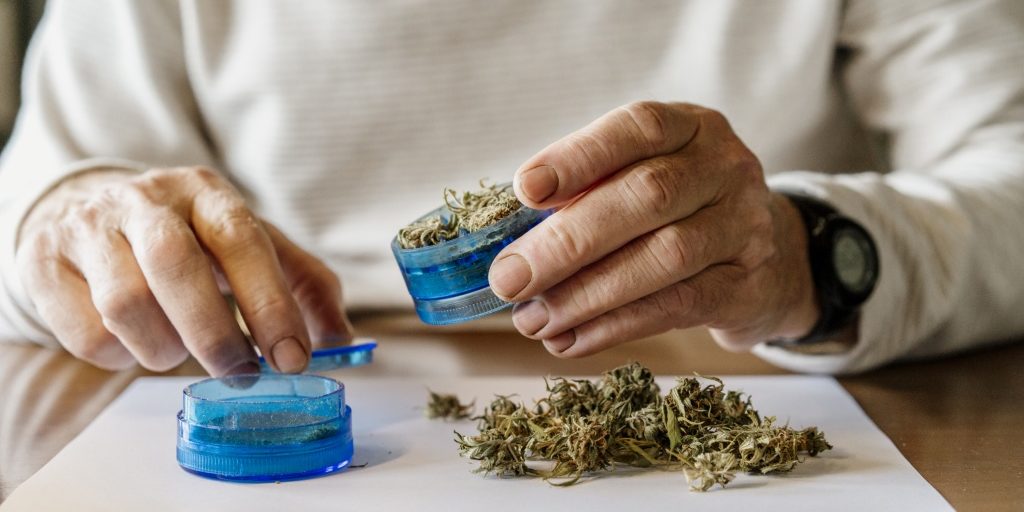Q: My grandmother is asking about medical cannabis. Before I ask her doctor about it, I’m wondering: What should seniors consider when deciding whether to use medical marijuana?
A: The fastest growing segment of medical cannabis patients is in fact, senior citizens, with a 75% increase over a three-year period as more states started passing legislation allowing it. And this number will likely grow as the US population continues aging. By 2030 it is predicted that 20% of the population will be over 65. In my practice, the average age of my patients is about 79.
We know that chronic pain is the most common complaint for which people use medical cannabis. It has analgesic and anti-inflammatory properties, it helps with sleep, and it helps elevate mood to also combat the depression that chronic pain patients often experience. 74% of older adults complain of chronic pain. A study presented at the American Academy of Pain Medicine found that despite modest improvements in pain scores, chronic pain patients generally reported satisfaction when using cannabis. Researchers speculated that this may be due to improved sleep and mood in these patients.
But there are special considerations older patients and family members need to think about. Over 70 % of older adults have 2 or more chronic illnesses, which often require medications to treat. In fact, research shows almost 40% percent of seniors take five or more prescriptions each day. And this polypharmacy has risks and side effects, due to drug interactions. According to the CDC over 450,000 older adults are seen in emergency rooms for adverse drug interactions.
And there can be drug interactions with cannabis use too. It typically occurs with oral cannabis preparations as opposed to inhaled cannabis. All oral medications, including cannabis, are broken down in our liver with a special enzyme system called the cytochrome P450 system. Since there is only so much enzyme available to break down these drugs, taking oral cannabis at along with other medications can overwhelm these enzymes, inhibiting them from breaking down your other medications, thus causing possible increased blood levels of your other medications, which can be toxic. Therefore, it is important to give yourself a 2-hour window either before or after your other medications prior to consuming cannabis.
Another important issue seniors and family members need to be cognizant of is that, as you get older, you can often have issues metabolizing and tolerating any kind of medication, and cannabis is no exception.
Physiological changes related to aging affect many aspects of how all drugs work in your body. Absorption of oral medications is affected by aging because stomach acid levels decrease. And the decrease in total body water and lean body mass with aging affects how drugs and cannabis are distributed throughout the body. Drug metabolism and the excretion of these drugs becomes less efficient with decreasing blood flow to the liver and kidney. And all of this can affect the safety and effectiveness of medical cannabis treatments for seniors.
Intoxication from cannabis is another concern for the elderly, as it can lead to falls. According to the CDC, falls are the leading cause of trauma injury-related death in people over 65 years of age. That is why, as a physician, I always tell my patients to “start low and go slow.” I always start patients on the lowest dose and tell them to advance slowly, and only start it on a weekend at home with somebody staying in the house with them. And for my older patients, I use high CBD, low THC ratios, such as 10:1 CBD:THC. CBD affects the cannabinoid 1 (CB1) receptors in a different area than THC, thus mitigating many of the psychoactive THC side effects that can occur in some people, such as anxiety and intoxication, but without affecting the therapeutic benefits.
And another challenge with seniors is that medical cannabis is unlike other medications in that it is a very personalized therapy. You need to have some patience as you evaluate what types of products and combinations of cannabinoids work best for you. Unlike conventional medicine where you take a “one-size-fits-all” pill, with medical cannabis you must find the correct dosing that works for you. And everyone reacts a little differently.
Often doses need to be calculated by patients because oral medical cannabis labels can be confusing. Sometimes they just give the full milligram (mg) number of cannabinoids in the whole container. Therefore, when taking a tincture, you might need to understand how to calculate and draw up the correct volume in milliliters (ml) to make sure you have your correct dose according to mg/ml. Even with oral gummies, you may need to divide how many pieces there are in the container to get the dose per piece, and then divide the actual gummy into smaller equal pieces to get to the correct dose.
I spend a lot of time helping my patients sort through all these issues. It is time-consuming trying to find the best type of products and then tinkering with the doses that work for them. I tell them it’s important to keep a log, recording what they tried, what the dose was, and how it affected them. This can help them optimize their benefits and try to maintain consistency when they find that combination that works.
But despite all this, it has been rewarding to see how medical cannabis has helped even my oldest patients.
Dr. Leigh Vinocur is a board-certified emergency physician who also has a cannabis consulting practice for patients and industry. She is a member of the Society of Cannabis Clinicians and a graduate of the inaugural class, with the first Master of Science in the country in Medical Cannabis Science and Therapeutics from the University of Maryland School of Pharmacy.
Originally published on greenstate.com, August 3, 2022.







